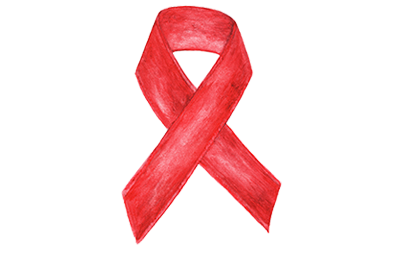
Sexual Risk Behaviors Can Lead to HIV, STDs, & Teen Pregnancy
Many Young People Engage in Sexual Risk Behaviors

Many young people engage in sexual risk behaviors and experiences that can result in unintended health outcomes.
CDC data show that lesbian, gay, and bisexual high school students are at substantial risk for serious health outcomes as compared to their peers.
Among U.S. high school students surveyed in 20171
- 40% had ever had sexual intercourse.
- 10% had four or more sexual partners.
- 7% had been physically forced to have sexual intercourse when they did not want to.
- 30% had had sexual intercourse during the previous 3 months, and, of these
- 46% did not use a condom the last time they had sex.
- 14% did not use any method to prevent pregnancy.
- 19% had drunk alcohol or used drugs before last sexual intercourse.
- Less than 10% of all students have ever been tested for human immunodeficiency virus (HIV).
HIV, STDs, and Teen Pregnancy are Health Consequences
Sexual risk behaviors place youth at risk for HIV infection, other sexually transmitted diseases (STDs), and unintended pregnancy:
HIV
21% of all new HIV diagnoses were among young people (aged 13-24) in 2017; 87% were young men and 13% were young women.2

STDs
Half of the 20 million new STDs reported each year were among young people (aged 15 to 24)3

Teen Pregnancy
Nearly 210,000 babieswere born to teen girls (aged 15–19 years) in 2016.4

Source: National Youth Risk Behavior Survey, 2017
Abstinence from vaginal, anal, and oral intercourse is the only 100% effective way to prevent HIV, other STDs, and pregnancy. The correct and consistent use of male latex condoms can reduce the risk of STD transmission, including HIV infection. However, no protective method is 100% effective, and condom use cannot guarantee absolute protection against any STD or pregnancy.
Schools and Youth Serving Organizations Can Help
School health programs can help young people adopt lifelong attitudes and behaviors that support their health and well-being—including behaviors that can reduce their risk for HIV and other sexually transmitted diseases (STDs).
HIV, STD, and teen pregnancy prevention programs in schools should
- Provide health information that is basic, accurate, and directly contributes to health-promoting decisions and behaviors.
- Address the needs of youth who are not having sex as well as youth who are currently sexually active.
- Ensure that all youth are provided with effective education and skills to protect themselves and others from HIV infection, other STDs, and pregnancy.
- Be developed with the active involvement of students and parents.
- Be locally determined and consistent with community values and relevant policies.
The National HIV/AIDS Strategy calls for all Americans to be educated about HIV. This includes knowing how HIV is transmitted and prevented, and knowing which behaviors place individuals at greatest risk for infection. HIV awareness and education [PDF – 70 pages] should be universally integrated into all educational environments.
CDC Programs & Initiatives
The prevalence of some health behaviors remains high and puts youth at higher risk for negative health outcomes and poor academic performance. CDC’s Division of Adolescent and School Health addresses HIV, other STDs, and teen pregnancy prevention through
Resources and Strategies for Preventing Sexual Risk Behavior Among Youth
Additional CDC resources and guidance documents are available here:
References
- CDC. Youth Risk Behavior Surveillance—United States, 2017. MMWR Surveill Summ2018;67(No. SS-8).
- CDC. Diagnoses of HIV Infection in the United States and Dependent Areas, 2017. HIV Surveillance Report 2018, vol. 29; November 2017.
- CDC. Sexually Transmitted Disease Surveillance 2016. Atlanta: U.S. Department of Health and Human Services; 2017.
- Martin JA, Hamilton BE, Osterman MJK, Driscoll AK, Drake P. Births: Final data for 2016. National Vital Statistics Report Rep 2016; vol 67, no 1. Hyattsville, MD: National Center for Health Statistics. 2018.
- Final Update Summary: Human Immunodeficiency Virus (HIV) Infection: Screening. U.S. Preventive Services Task Force. November 2018.
- CDC. Revised recommendations for HV testing of adults, adolescents, and pregnant women in health-care settings. MMWR 2006;55:1-17.






















.png)











No hay comentarios:
Publicar un comentario